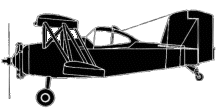
ASN Wikibase Occurrence # 298961
This information is added by users of ASN. Neither ASN nor the Flight Safety Foundation are responsible for the completeness or correctness of this information.
If you feel this information is incomplete or incorrect, you can submit corrected information.
| Date: | Thursday 25 May 2000 |
| Time: | 08:00 LT |
| Type: |  Grumman G-164A |
| Owner/operator: | Downstown Airport, Inc. |
| Registration: | N910X |
| MSN: | 502 |
| Year of manufacture: | 1968 |
| Total airframe hrs: | 6268 hours |
| Engine model: | P&W R-1340 |
| Fatalities: | Fatalities: 0 / Occupants: 1 |
| Aircraft damage: | Substantial |
| Category: | Accident |
| Location: | TOMS RIVER, New Jersey -
 United States of America United States of America
|
| Phase: | Unknown |
| Nature: | Agricultural |
| Departure airport: | CHATSWORTH , NJ |
| Investigating agency: | NTSB |
| Confidence Rating: |
After the third aerial application pass, the airplane's engine developed a severe vibration, then seized. The pilot dropped the chemical load, turned the airplane into the wind, and made a forced landing into a cranberry bog. Afterwards, the pilot reported that had he had felt no binding when he pulled the propeller through, to check for hydraulic lock during the preflight. He also stated that the airplane hadn't seemed to be developing full power for about a week prior to the accident. During the post-accident engine teardown, an upper (number 9) cylinder was removed, and a broken connecting rod was found. Metallurgical examination of the connecting rod fragments revealed well-defined crack arrest positions, indicative of fatigue, on the smaller fragment. The fracture features within the fatigue region were relatively uneven, and in several locations, the fatigue crack appeared to have extended in overstress. There were no visible metallurgical defects in the initiation area. The larger fragment contained features typical of an overstress. According Advisory Circular 65-12A, a partial hydraulic lock could cause a 'slightly bent connecting rod,' which could go unnoticed, but would be 'sure to fail later.' Upper cylinders on high wing aircraft have been known to be susceptible to hydraulic lock due to a leaking fuel primer.
Probable Cause: The failure of the number 9 cylinder connecting rod, due to a primer leak initiation of a partial hydraulic lock. A factor in the accident was the unsuitable terrain, to which the forced landing had to be made.
Accident investigation:
 |
|
Sources:
NTSB NYC00LA144
Revision history:
| Date/time | Contributor | Updates |
|---|---|---|
| 16-Oct-2022 00:48 | ASN Update Bot | Added |
Corrections or additions? ... Edit this accident description
The Aviation Safety Network is an exclusive service provided by:


 ©2024 Flight Safety Foundation
©2024 Flight Safety Foundation